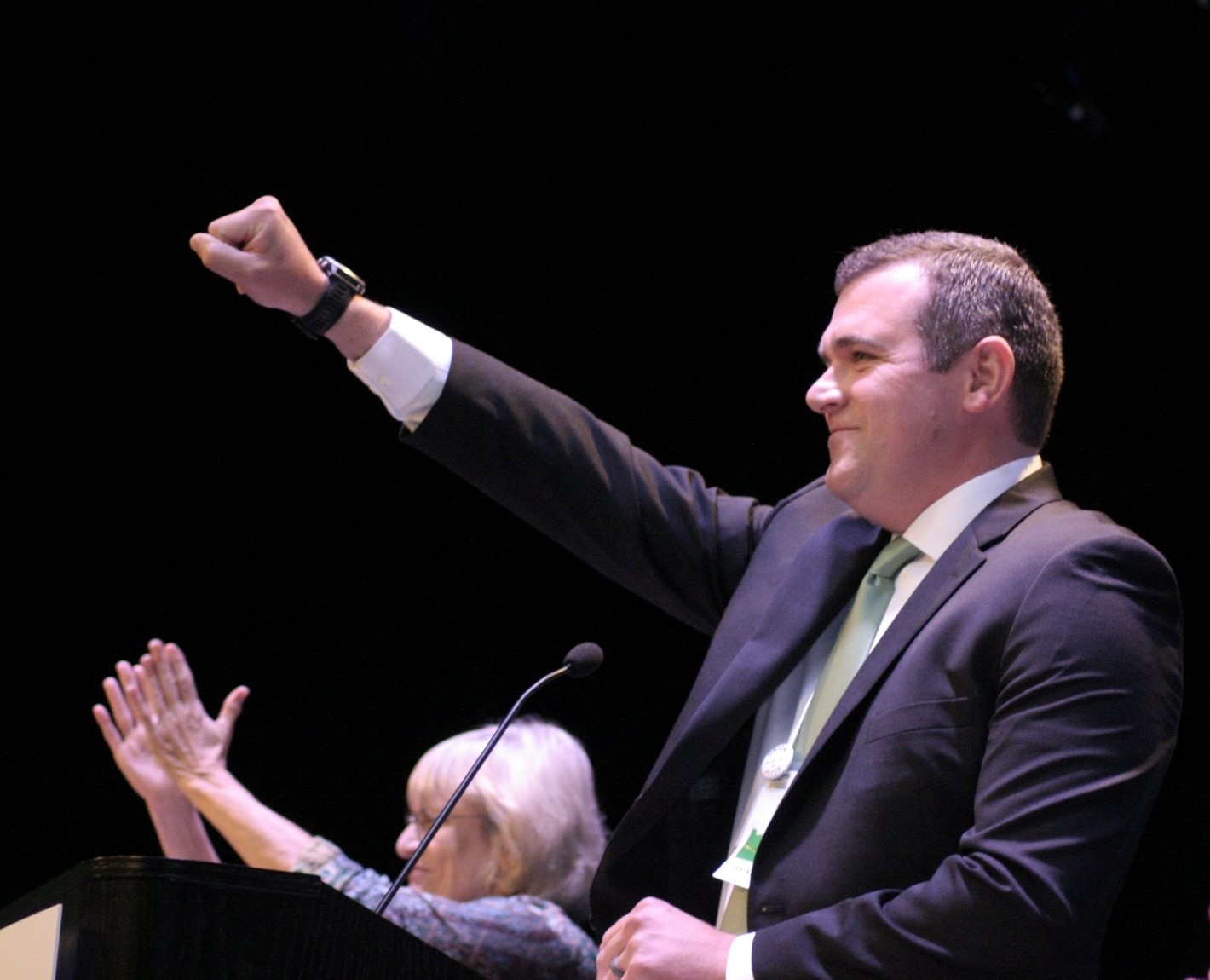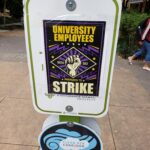The newly elected president of the Oregon AFL-CIO shares insight into why unions have surged back to life and where the movement is headed.
In 2018 more employees went on strike than at any time since the 1980s.
Much of this labor action has been felt in Oregon, where in recent weeks several unions have staged walkouts.
Last month the United Food and Commercial Workers (UFCW) Local 555 successfully boycotted grocery store Fred Meyer.
Also in September supporters of Service Employees National Union (SEIU) 503, which represents state university employees, got an upgraded contract after voting to authorize a strike.
Oregon health care employees also joined a list of 80,000 workers represented by at least 300 unions to reach a bargaining agreement with Kaiser Permanente.
In the midst of this labor action, Graham Trainor was elected president of the Oregon chapter of the American Federation of Labor and Congress of Industrial Organizations (AFL-CIO), a federation of unions.
Trainor has worked 13 years at the organization, having served as an organizer, campaign manager and lobbyist.
What’s behind the recent rise in union activity in Oregon?
There’s a rising trend towards worker action across the country. Working people have been dealing with the brunt of an economic system that isn’t working for them despite all the news of economic growth, GDP gains and low unemployment numbers.
They’re fed up and they are looking around and they see the labor movement fighting for them.
RELATED STORY: Are Unions Back?
Why were these three recent labor disputes successful?
It was really exciting as a working class advocate to see people put it all on the line and vote to strike during these big contract campaigns.
Of course no-one wants to go on strike, but seeing workers willing to take that step was really inspiring. When one union stands up and fights back, it makes other workers more comfortable doing the same.
I think it signals a bold and inspiring renaissance in the Oregon labor movement. We get new messages from workers who want to unionize every day.
What are unions fighting for today?
Living affordability has been part of every labor struggle that I can remember. As the cost of living continues to rise it will continue to be an issue. It’s especially important in urban areas where people often can’t afford to live close to where they work.
One thing that’s been exciting during these last contract fights was the union’s focus on pay equity between men and women.
You saw in this last legislative session the Oregon labor movement fight to expand protections for people who face sexual harassment on the job. That’s something the labor movement has prioritized recently.
Where has the labor movement been making membership gains?
I think the box some people try to put the labor movement into is a completely false narrative.
A number of journalism outlets have unionized successfully in the last year or two. You’ve seen video game developers and fast-food workers unionizing.
I’m really proud of the work being done in the behavioral health care sector. Social workers are doing hard work to raise standards in an entire industry.
How has technology reshaped the way unions operate?
The internet has made information more accessible and instantaneous. We’ve got a team of young campaigners who are harnessing the power of technology for the organizing they do.
There were a couple of flash mobs that took place across some Fred Meyer stores during this recent fight. That was a group of women activists who wanted to make sure the issue of pay gap was expressed in an entertaining way.
How are millennial employees impacting unions?
In 2017, 76% of new union members were under 35 years old. There are young workers who were told one thing about their economic prospects when they went off to college and are now struggling under a mountain of student debt.
They are looking for help in their situation so they’re turning to our movement.
There’s a lot to be said about the enthusiasm of younger workers who want to fight for what they believe in.
What areas do you see as the future of the labor movement?
It’s important for the labor movement to be proactive to address how gains made by automation and technology can lead to shared prosperity.
I’m thinking about the person driving for Uber and Lyft, delivering for Grubhub and Postmates, who is misclassified as an independent contractor from our perspective.
They are not receiving any of the benefits an employee might have.
We helped the City of Portland from an advisory committee to give these workers classified as independent contractors a voice in their conditions.
We believe we represent all working people, whether they’re part of a union or not.
What can employers can do to interact positively with unions?
Employers should be thinking about how they can share the wealth their employees are helping to create.
The Portland Diamond Project, for example, decided to make sure the jobs they were creating at their new stadium had a pathway to becoming family-supporting, middle-class jobs by allowing employees unfettered access to unions.
To subscribe to Oregon Business, click here.










